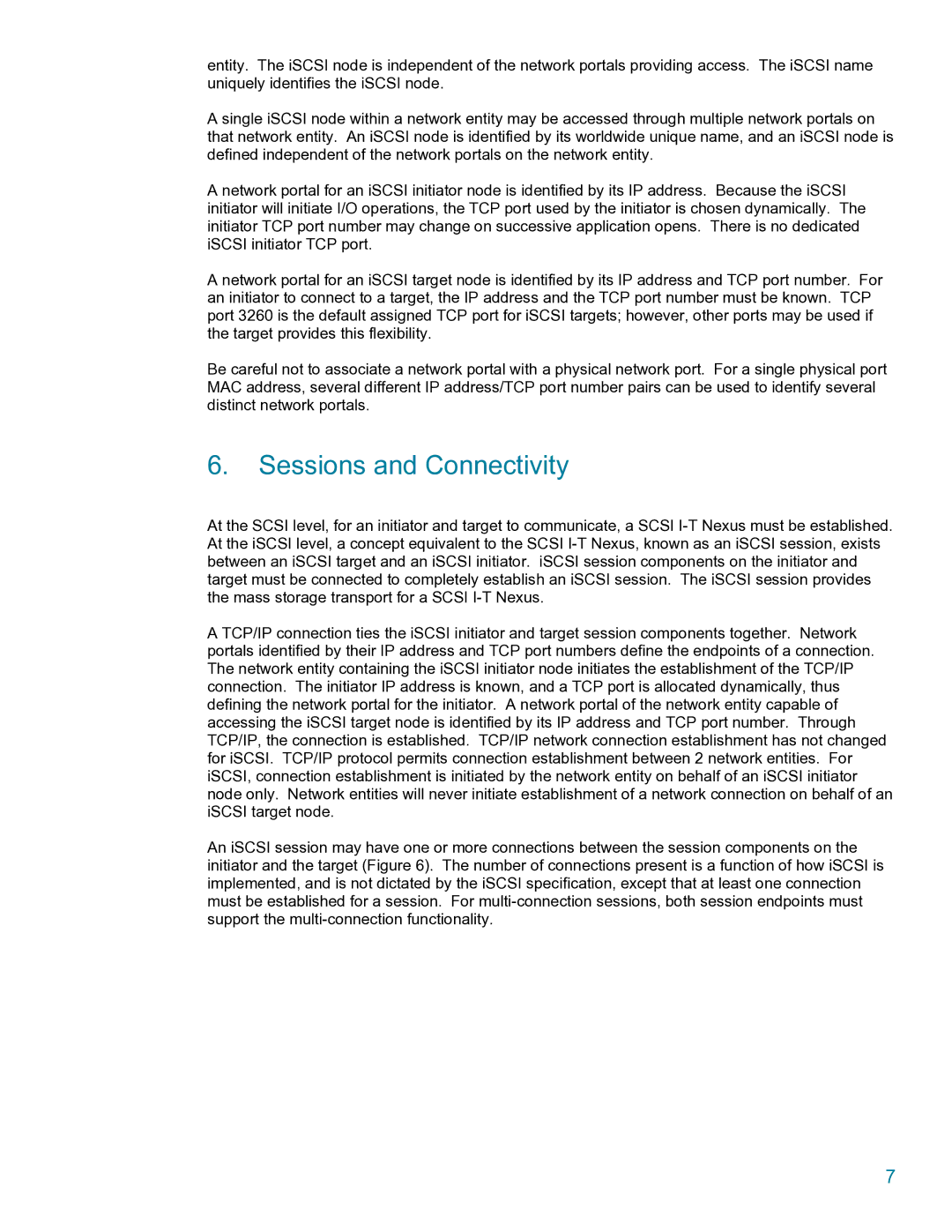entity. The iSCSI node is independent of the network portals providing access. The iSCSI name uniquely identifies the iSCSI node.
A single iSCSI node within a network entity may be accessed through multiple network portals on that network entity. An iSCSI node is identified by its worldwide unique name, and an iSCSI node is defined independent of the network portals on the network entity.
A network portal for an iSCSI initiator node is identified by its IP address. Because the iSCSI initiator will initiate I/O operations, the TCP port used by the initiator is chosen dynamically. The initiator TCP port number may change on successive application opens. There is no dedicated iSCSI initiator TCP port.
A network portal for an iSCSI target node is identified by its IP address and TCP port number. For an initiator to connect to a target, the IP address and the TCP port number must be known. TCP port 3260 is the default assigned TCP port for iSCSI targets; however, other ports may be used if the target provides this flexibility.
Be careful not to associate a network portal with a physical network port. For a single physical port MAC address, several different IP address/TCP port number pairs can be used to identify several distinct network portals.
6.Sessions and Connectivity
At the SCSI level, for an initiator and target to communicate, a SCSI
A TCP/IP connection ties the iSCSI initiator and target session components together. Network portals identified by their IP address and TCP port numbers define the endpoints of a connection. The network entity containing the iSCSI initiator node initiates the establishment of the TCP/IP connection. The initiator IP address is known, and a TCP port is allocated dynamically, thus defining the network portal for the initiator. A network portal of the network entity capable of accessing the iSCSI target node is identified by its IP address and TCP port number. Through TCP/IP, the connection is established. TCP/IP network connection establishment has not changed for iSCSI. TCP/IP protocol permits connection establishment between 2 network entities. For iSCSI, connection establishment is initiated by the network entity on behalf of an iSCSI initiator node only. Network entities will never initiate establishment of a network connection on behalf of an iSCSI target node.
An iSCSI session may have one or more connections between the session components on the initiator and the target (Figure 6). The number of connections present is a function of how iSCSI is implemented, and is not dictated by the iSCSI specification, except that at least one connection must be established for a session. For
7
